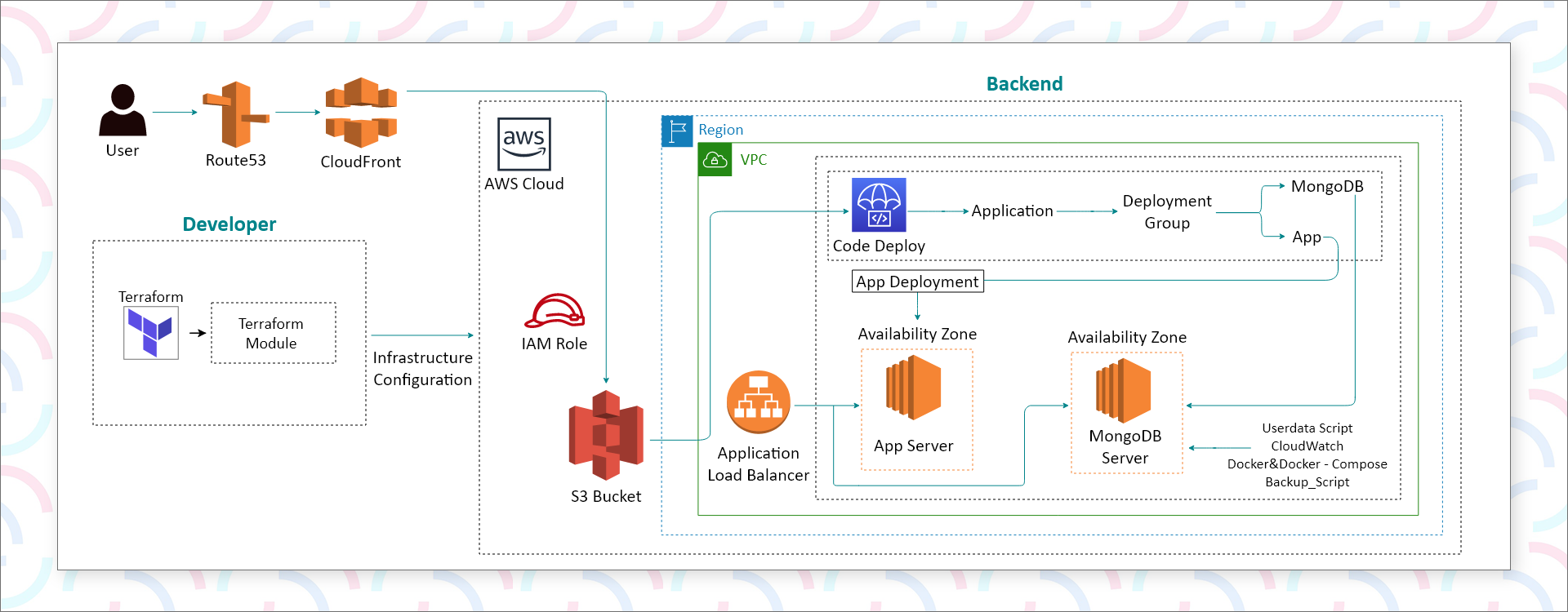Overview
A diagnostics and medication solution for detecting cancerous diseases and providing proper medication based on the generated results of the diagnostics.
At A Glance

Industry
Healthcare

Region
USA

Duration
8 Weeks
Technical Stack







Client Profile
The client is a healthcare provider based out of the USA with a focus on diagnosing early stages of cancer precisely. They are into integrating cutting-edge technology into their clinical practice to improve the accuracy and efficiency of their assessments.
Challenge
- The client faced issues with setting up the local deployment and testing their solution. They also had complications while deploying it on AWS.
- The client wanted the technical expertise to automate sending of the logs and metrics of the host machine and Docker Daemon.
- The client wanted to implement the CI/CD pipeline for automatic software deployments and updates.
- The client was facing issues due to a lack of service support for Ansible on AWS. The client wanted a better Infrastructure code solution.
- The client wanted detailed technical expertise on all the operation reporting tools that might improve their monitoring and reporting capabilities.
- The client wanted a more secure way of accessing the AWS console with Zero Trust security implementation, that would have the least vulnerabilities.
- The client had user authentication issues for its Flask-based applications and wanted to identify and replace them with a more advanced tool.
- The client wanted to automate the backup storage of their MongoDB database in AWS S3.

Solution
- Seaflux tested the solution locally, did a smooth deployment of the solution on AWS, and effectively implemented the solution in its clinical workflow. It ensured the necessary infrastructure configuration, data security, and compliance with regulatory requirements.
- Seaflux developed a user data script that installs & configures AWS Cloudwatch Agent and Docker at the time of launch of the AWS instance and will provide system logs and Docker Deamon logs in AWS Cloudwatch log groups using Terraform.
- Seaflux implemented CI/CD tools and best practices for automation after understanding the client's specific requirements and goals. The implementation helped with scalability, cost efficiency, and easy usage with reduced time to market.
- Seaflux replaced Ansible with Terraform, which has containerized solutions deployed for provisioning software for AWS and better support capabilities with cloud service providers. The whole infrastructure was migrated from Ansible to Terraform in a seamless manner.
- Seaflux developed the Grafana dashboard as their monitoring and reporting tool, which is easy to use, scalable, has integration capability, and is cost-efficient. It helps to monitor patients’ reports and graphs at an individual and organizational level. The implementation and usage documents have been developed for maintenance and future scope.
- Seaflux understood the client's architecture and application to get a clear picture of where the credentials are used and how the console access can be controlled. AWS IAM allows you to create task-specific alternative authentication mechanisms, known as Roles. The Roles will enable the user only to perform the task that has been assigned, and all other features are restricted. Seaflux also implemented Zero Trust security along with monitoring and logging mechanisms to track access to their services and detect potential security threats.
- Seaflux identified all the areas in the infrastructure of the product, where Flask is in use and integrated AWS Cognito with it. New application codes and configurations were developed for more secure authentication and authorization of its users. A knowledge base has been created for the proper and optimized usage of Cognito.
- Seaflux implemented a script that would automate the backup of the MongoDB database in the AWS S3 bucket. The script connects to the MongoDB database, takes a backup, and stores it in S3. Automation is also implemented that is scheduled to run at regular intervals to validate the backup data and ensure that it can be used for disaster recovery.
Key Benefits
- The improved solution helped the client with better usability of the product to diagnose the medical condition of the patient.
- The CI/CD implementation helped to achieve a 100% uptime guarantee, resulting in hassle-free usage. It also reduced time to market by 33%, which helped to add the newly discovered cancerous cell diagnostics features instantly.
- Visualization in Grafana helped doctors to monitor each patient's data and prescribe medication more accurately. This helped in a faster recovery of patients in more than 63% of the patients.
Develop your next idea with usGet in touch






